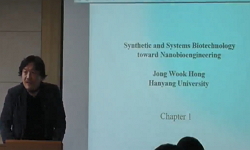Korean native honey (KNH) is much more expensive than European honey (EH) in Korea, because KNH is a favored honey which is produced less than EH. Food fraud of KNH has drawn attention of the government office concerned, which is in need of a method...
http://chineseinput.net/에서 pinyin(병음)방식으로 중국어를 변환할 수 있습니다.
변환된 중국어를 복사하여 사용하시면 됩니다.
- 中文 을 입력하시려면 zhongwen을 입력하시고 space를누르시면됩니다.
- 北京 을 입력하시려면 beijing을 입력하시고 space를 누르시면 됩니다.



Detection of Korean Native Honey and European Honey by Using Duplex Polymerase Chain Reaction and Immunochromatographic Assay
한글로보기https://www.riss.kr/link?id=A105405244
- 저자
- 발행기관
- 학술지명
- 권호사항
-
발행연도
2017
-
작성언어
-
- 주제어
-
KDC
527
-
등재정보
SCIE,SCOPUS,KCI등재
-
자료형태
학술저널
- 발행기관 URL
-
수록면
599-605(7쪽)
- 제공처
-
0
상세조회 -
0
다운로드
부가정보
다국어 초록 (Multilingual Abstract)
because KNH is a favored honey which is produced less than EH. Food fraud of KNH has
drawn attention of the government office concerned, which is in need of a method to differentiate
between KNH and EH which are produced by the Asiatic honeybee, Apis cerana and
the European honeybee, Apis mellifera, respectively. A method to discriminate KNH and EH
was established by using duplex polymerase chain reaction (PCR) in this study. Immunochromatographic
assay (IC) was examined to analyze the duplex PCR product. The DNA sequences
of primers for the duplex PCR were determined by comparing cytochrome C oxidase
genes of the two honey bee species. Chelex resin method was more efficient in extracting
genomic DNA from honey than the other two procedures of commercial kits. The duplex
PCR amplifying DNA of 133 bp were more sensitive than that amplifying DNA of 206 bp in
detecting EH in the honey mixture of KNH and EH. Agarose gel electrophoresis and IC
detected the DNA of 133 bp at the ratios of down to 1% and 5% EH in the honey mixture,
respectively and also revealed that several KNH products distributed by internet shopping
sites were actually EH. In conclusion, the duplex PCR with subsequent IC could also discriminate
between KNH and EH and save time and labor.
Korean native honey (KNH) is much more expensive than European honey (EH) in Korea,
because KNH is a favored honey which is produced less than EH. Food fraud of KNH has
drawn attention of the government office concerned, which is in need of a method to differentiate
between KNH and EH which are produced by the Asiatic honeybee, Apis cerana and
the European honeybee, Apis mellifera, respectively. A method to discriminate KNH and EH
was established by using duplex polymerase chain reaction (PCR) in this study. Immunochromatographic
assay (IC) was examined to analyze the duplex PCR product. The DNA sequences
of primers for the duplex PCR were determined by comparing cytochrome C oxidase
genes of the two honey bee species. Chelex resin method was more efficient in extracting
genomic DNA from honey than the other two procedures of commercial kits. The duplex
PCR amplifying DNA of 133 bp were more sensitive than that amplifying DNA of 206 bp in
detecting EH in the honey mixture of KNH and EH. Agarose gel electrophoresis and IC
detected the DNA of 133 bp at the ratios of down to 1% and 5% EH in the honey mixture,
respectively and also revealed that several KNH products distributed by internet shopping
sites were actually EH. In conclusion, the duplex PCR with subsequent IC could also discriminate
between KNH and EH and save time and labor.
목차 (Table of Contents)
- Introduction
- Materials and Methods
- Results and Discussion
- Acknowledgements
- Introduction
- Materials and Methods
- Results and Discussion
- Acknowledgements
동일학술지(권/호) 다른 논문
-
- 한국축산식품학회
- Tae-Kyung Kim
- 2017
- SCIE,SCOPUS,KCI등재
-
- 한국축산식품학회
- Hyun-Joo Lee
- 2017
- SCIE,SCOPUS,KCI등재
-
- 한국축산식품학회
- Min Guk Cho
- 2017
- SCIE,SCOPUS,KCI등재
-
- 한국축산식품학회
- Kyungmi Kim
- 2017
- SCIE,SCOPUS,KCI등재





 ScienceON
ScienceON 스콜라
스콜라


